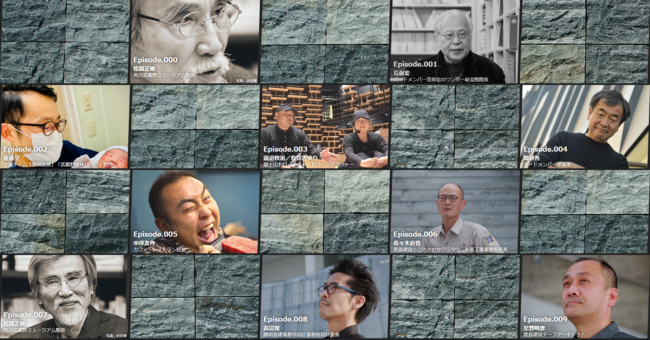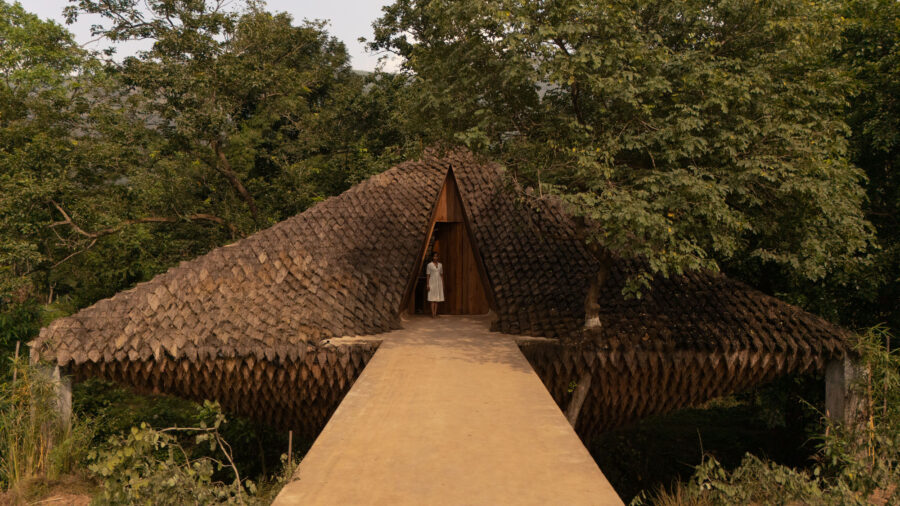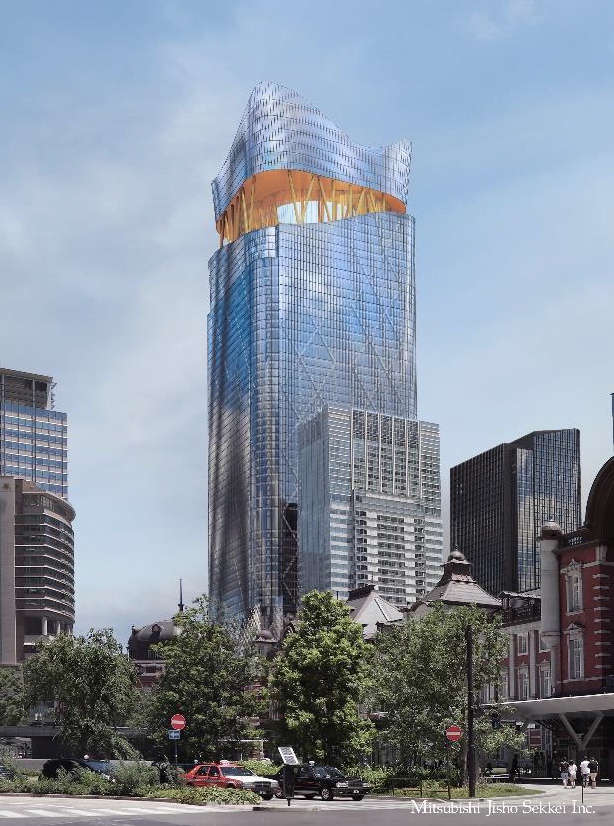
CULTURE


©︎Laurian Ghinitoiu
ザハ・ハディド・アーキテクツがキプロスの首都ニコシアに設計した、分断された新旧市街をつなぐ広場〈エレフテリア広場〉は、分裂した首都を再び統一することを目指し設計されています。
(以下、Zaha Hadid Architectsから提供されたプレスキットのテキストの抄訳)

©︎Laurian Ghinitoiu
分断されたまちと首都
ザハ・ハディド・アーキテクツ(以降、ZHAと表記)のデザインは、〈エレフテリア広場〉をまちの主要な集いの場とすることで、分裂した首都を1つにするための新たなつながりを生み出します。
キプロスの首都ニコシアは、巨大な防護壁「ベネチアンウォール」と、そこに設けられた要塞により、旧市街と新市街が分断されています。

©︎Laurian Ghinitoiu
ニコシアの中心部に位置する〈エレフテリア広場〉は、街を取り囲むベネチアンウォールと空堀に隣接しています。
中世に建設され、16世紀にベネチア共和国により大規模に再建されたこのベネチアンウォールは、首都の古い部分の境界を定め、古代都市と壁の外の新市街とを分けています。
また、キプロスを横断する「グリーンライン(南部のギリシャ系住民と、北部のトルコ系住民との衝突を抑止するため、1974年に国際連合が引いた緩衝地帯(停戦ライン))」によって首都が2つの地域に分かれています。

CONCEPTUAL MASTER DIAGRAM:横断するグリーンラインとニコシアを取り囲むベネチアンウォール、そこ囲むように続く「グリーンベルト」
まちをつなぎ、首都をつなぐ
ZHAは〈エレフテリア広場〉を、首都再統一を促進する大規模な都市計画の初期段階として構想しています。
デザインは、ベネチアンウォールの景観を損なわず、ニコシアのアイデンティティの一部として定着させるとともに、空堀を開放してまちを取り囲む環状公園としました。

GREEN AREAS:ネックレスのようにベネチアンウォールを取り囲み、統一感を出す「グリーンベルト」
堀の中のこれまで立ち入ることができなかった場所を、新しい市民広場や庭園、ヤシの木が並ぶ遊歩道などに変えることで、堀は街を囲む「グリーンベルト」ととなります。
ZHAは、堀の中の新しい公共空間を古代の城壁に沿って拡張しニコシアを囲むことで、この分断された首都のコミュニティを再びつなげることを提案しています。

PEDESTRIAN PATHS
「つなぐ」デザイン
〈エレフテリア広場〉のデザインは、堀の地形を利用して上層に橋を架け、周囲のまち並みと一体化させ、ニコシアの都市構造に直接接続し、首都の中心部に新しい公共広場を定義しています。

©︎Laurian Ghinitoiu
都市公園として生まれ変わった堀の流動的な幾何学的形状は、新しい公園内のベンチ、花壇、噴水などのウォーターファニチャを配置する「強さ」を持つポイントを設定するため、要塞の不規則な形状の測量といったプロセスを通じて生み出されました。

©K.Arkatites
歴史的な価値を守るための新たな広場
堀の花崗岩の舗装は、時代を超えた堅固さを伝えます。花崗岩のスラブ間のオープンジョイントと、堀の中に植えられた木々が自然に地下水位のバランスをとり、中世の壁の基礎の侵食を軽減するパッシブ雨水排水システムをつくり出します。

©K.Arkatites

©K.Arkatites
ニコシア最大の市民広場である〈エレフテリア広場〉は、フェスティバルやパブリックイベントを開催するために設計されました。上層部の橋と支柱はコンクリートでつくられ、その彫刻的な形はこの地震地域における構造的整合性を確保し、各柱の基部が座席に変形するように設計されています。

©︎Laurian Ghinitoiu
広場の改修には、考古学的な発掘調査や、歴史的なベネチアンウォールの修復・保護が行われました。
また、広場内には2つのカフェがあり、オミロウ・アヴェニューにはアクセスランプ付きの地下駐車場が新設されました。階段とエレベーターはソロモス広場のバスターミナルに直結しています。

©K.Arkatites
ZHAが手がけた〈エレフテリア広場〉は、ニコシアの豊かな歴史と未来への揺るぎないオプティミズム(楽観主義)を織り込んでいます。この広場は、ベネチアンウォールと堀に架けられ、旧市街への重要な玄関口となります。
地下駐車場により、旧市街の通りから自動車が排除されることで、歩行者のための空間が実現し、この歴史地区の都市空間はより豊かになり、市民や観光客が楽しめる新しい公共庭園や広場がつくられました。

©︎Laurian Ghinitoiu

©︎Laurian Ghinitoiu

©︎Laurian Ghinitoiu

©︎Laurian Ghinitoiu

©︎Laurian Ghinitoiu

©︎Laurian Ghinitoiu

©︎Laurian Ghinitoiu

©︎Laurian Ghinitoiu

©︎Laurian Ghinitoiu

©K.Arkatites

©︎Laurian Ghinitoiu

©︎Laurian Ghinitoiu






以下、Zaha Hadid Architectsのリリース(英文)です。
Eleftheria Square
Nicosia, CyprusProject Description
Establishing Eleftheria Square as the city’s primary gathering space, Zaha Hadid Architects’ (ZHA) design creates new connections intended to unite a divided capital. Nicosia’s massive Venetian fortifications separate the old city from its modern districts, while the city’s ‘Green Line’ divides the capital into two disparate communities.Located near the centre of Nicosia, Eleftheria Square is adjacent to the Venetian Walls and the dry moat that encircles the city. Constructed in the Middle Ages and extensively rebuilt by the Venetians in the 16th century, these substantial defensive walls define the boundary of the oldest part of the capital, dividing the ancient city from the new districts outside the walls.
ZHA envisioned Eleftheira Square as the initial phase of a much larger urban plan that could be a catalyst for the reunification of the capital. The design ensures unobstructed views of the Venetian Walls, establishing these fortifications as an integral part of Nicosia’s identity, while also opening the dry moat for public use to create an orbital park that surrounds the city.
Transforming previously inaccessible areas of the moat with new civic plazas, gardens and palm- lined promenades, the moat can become a ‘green belt’ around the city. ZHA’s design proposes these new public spaces within the moat are extended to follow the ancient city walls and encircle Nicosia, reconnecting communities of this divided capital.
The Eleftheria Square design elevates the topography of the moat to create an upper level bridge that meets the surrounding streetscape, establishing direct connections with the city’s urban fabric and defining a new public square in the heart of the capital.
Transformed into an urban park, the moat’s fluid geometries have been created through the process of triangulating the irregular forms of the ancient fortifications to establish points of ‘intensity’ that define seating, flowerbeds or water features within the new park.
The moat’s granite paving conveys a timeless solidity, while open joints between the granite slabs create a passive rainwater drainage system that allows the new trees planted within the moat to naturally balance groundwater levels and reduce erosion of the medieval walls’ foundations.
As the largest civic plaza in Nicosia, Eleftheira Square has been designed to host festivals and public events; its upper level bridge and supporting columns are crafted in concrete, their sculptural forms ensure structural integrity in this seismic region and the base of each column morphs into seating.
The renovation of the square involved extensive archaeological excavations together with works to repair and protect the historic Venetian Walls. The redevelopment also includes two cafes within the square and the new underground parking lot with access ramp on Omirou Avenue. Stairs and elevators directly connect with the bus terminal in Solomos Square.
ZHA’s transformation of Eleftheria Square weaves together Nicosia’s rich history with an unwavering optimism for the future. Bridging the Venetian Wall and moat, the square becomes an important gateway to the old city, its underground parking removing cars from the ancient city’s streets to enable further pedestrianisation that enhances the urban realm of this historic district while also creating new public gardens and plazas to be enjoyed by residents and visitors to the city.
Project Team
Architect: Zaha Hadid Architects (ZHA)
Design: Zaha Hadid, Patrik Schumacher, Christos Passas
ZHA Competition team: Christos Passas (Design Director), Saffet Bekiroglu, Viviana Muscettola, Michele Pasca di Magliano, Daniel Fiser, Ceyhun Baskin, Inanc Eray
ZHA Schematic Design Team: Stella Nikolakaki (Design Lead), Sevil Yazici (Design Lead), Sylvia Georgiadou, Takang Hsu, Phivos Skroumbelos and Marilena Sophocleus (Landscape), Chrysi Fradellou, Edward Sorgeloose, Vladimir Tschaly
ZHA Design Development: Dimitris Akritopoulos (Design Lead), Bence Pap (Design Lead), Kwanphil Cho, Reza Esmaeeli, Chrysi Fradellou, Raul Forsoni, Thomas Frings, Jesus Garate, Irene Guerra, George Giokalas, Spyridon Kaprinis, Javier Ernesto Lebie, Carlos Luna, Vincent Nowak, Anna Papachristoforou, Sophia Papageorgiou, Vivian Pashiali, Ivan Ucros Polley, Matthew Richardson, Michail Roidis, Hendrik Rupp, Andri Shalou, Vladimir Tschaly, Leo Alves, Megan Burke (Landscape), Eleni Mente (Landscape), David McDowell (Administration)
ZHA Project Supervision Team: Electra Mikelides, Dimitris Kolonis, Stella Nikolakaki, Vivian Pashiali, Christos Sazos, Nicos Yiatros, Christina Christodoulidou, Maria-Eleni BaliConsultants
On-site Engineers: Eleni Loizou, Remos Achilleos
Structural Engineers: ASD Hyperstatic Engineering [Limassol]; Andros Achilleos (Principal Engineer), Michalis Allayiotis (Project Engineer)
MEP Engineers: UNEMEC [Nicosia]; Lakis Pipis (Director in-charge), Andreas Karayiannis and Trevor Colett (Directors), Chris MacFarlane, Kleovoulos Kasoulides, George Lerides, Kypros Tziakouris (Electrical Engineers -supervision stage) Kostas Archeos (Supervising Electrical Engineer) Panayiotis Ktorides (Mech. Engineer)
Lighting: Kardorff Lichtplanung Ing. [Berlin]; Volker Kardorff (Principal), Stefan Krauel (Project Designer)
Accessibility Consultants: David Bonnett Associates; David Bonnett MTCW; Klelia Petridou
Traffic Consultants: SKM Colin Buchanan; Andreas Markides (CEO), Colin Firth (Director)
Project Management/Coordination Team: Modinos & Vrahimis Associates; Saverios Vrahimis(Director), Anna Lyssandridou
Client Project Management Team: Agni Petridou (Project Coordinator), Maria Ioannou, Maria Georgiou, Foivos Tsappas, Georgiana Loizides
Cost Consultants: MDA Cyprus; Stephanos Andreou (Director In Charge), Niki Stavrou
Advisors: Lekton [Cyprus]; Andy Sphicas, Soula Iacovidou The Concrete Center [UK]Beton Centrum [NL]
「Eleftheria Square」Zaha Hadid Architects公式サイト
https://www.zaha-hadid.com/masterplans/eleftheria-square/

![[大阪・関西万博]海外パビリオン紹介_ベルギー](https://magazine-asset.tecture.jp/wpcms/wp-content/uploads/2025/06/07002852/IMG_1592-900x595.jpg)







